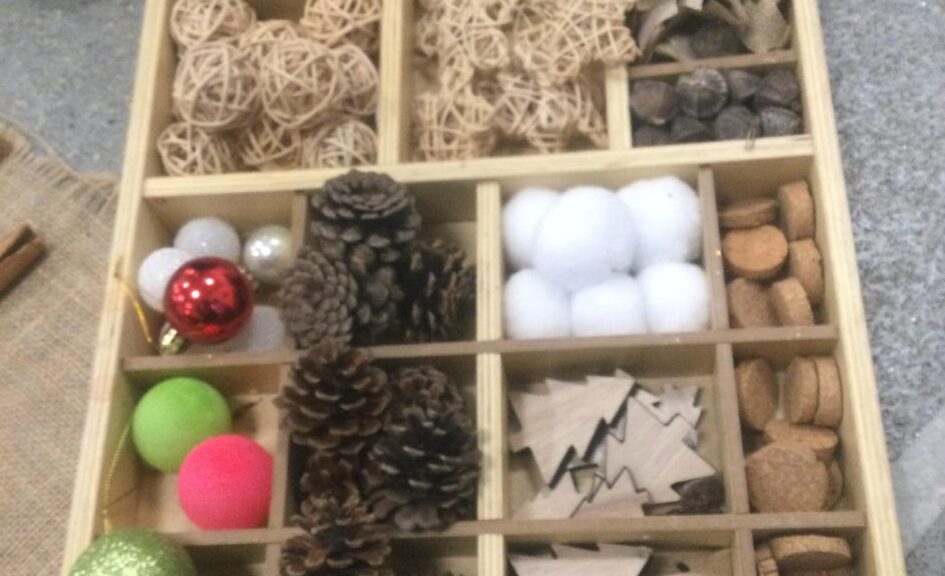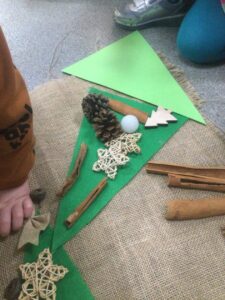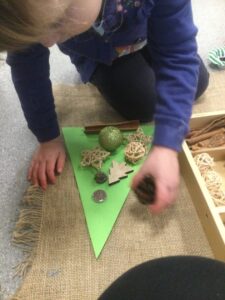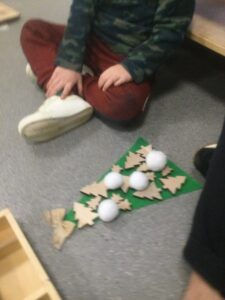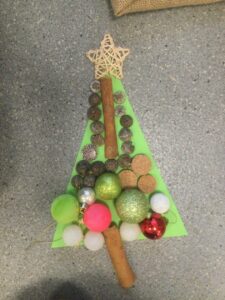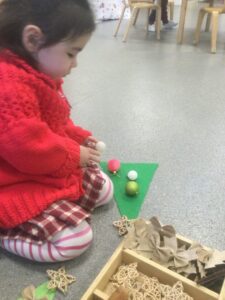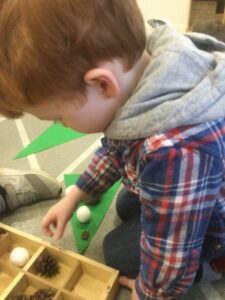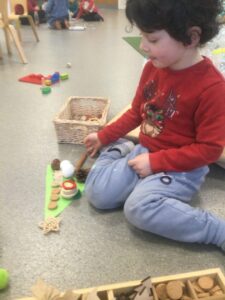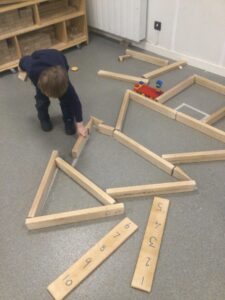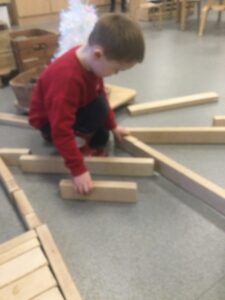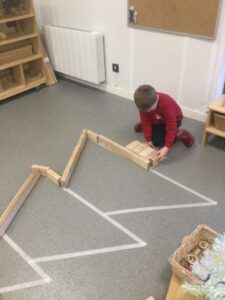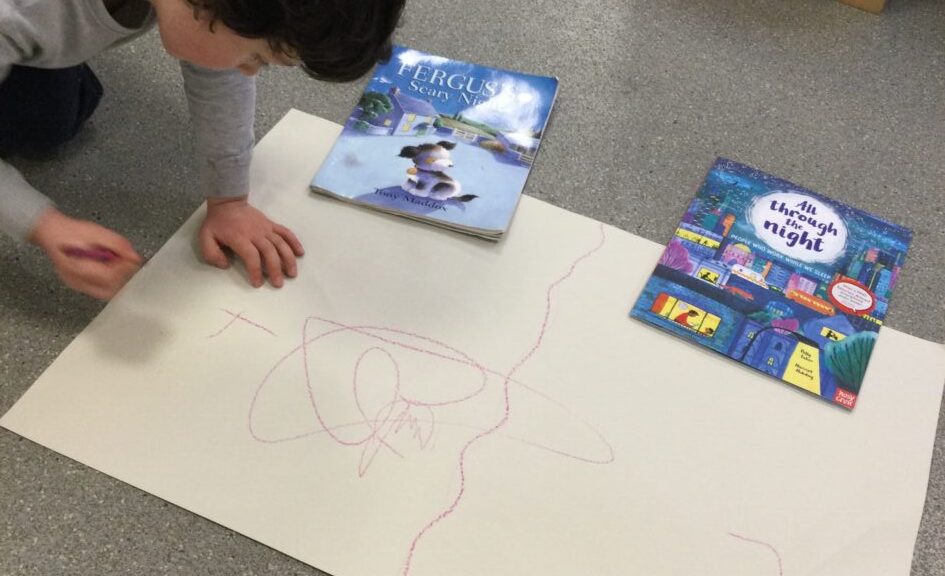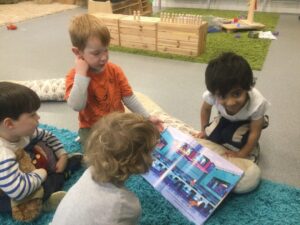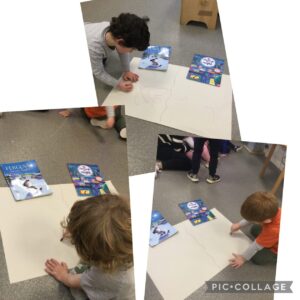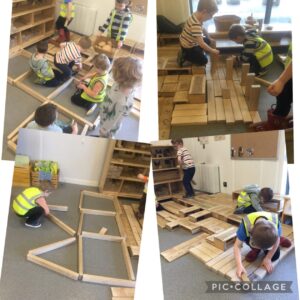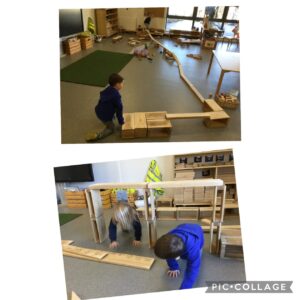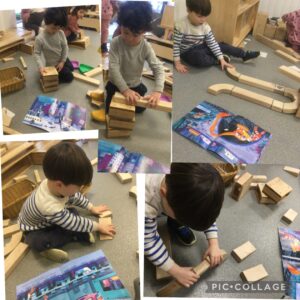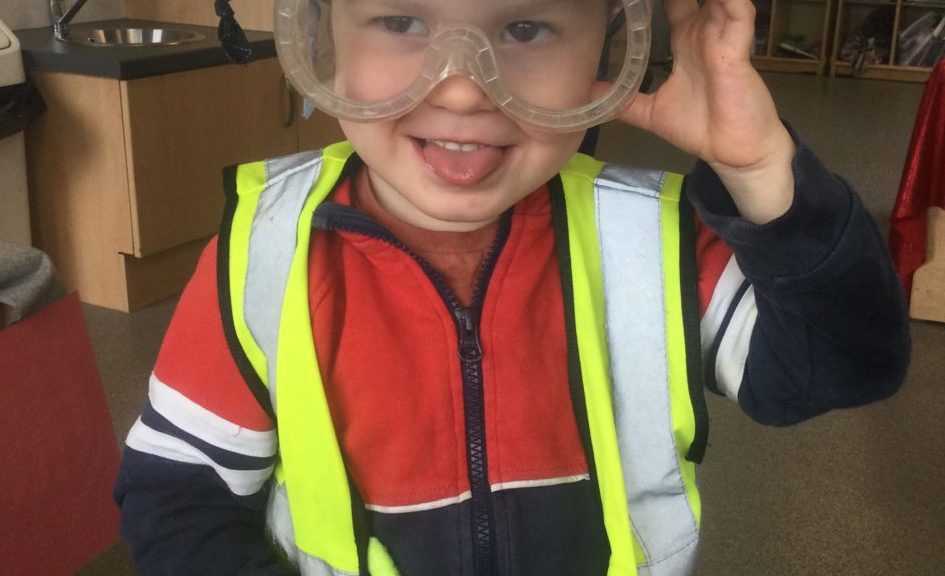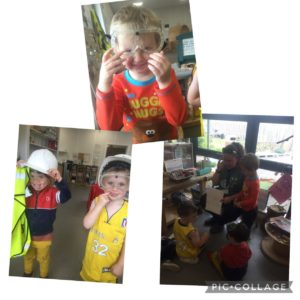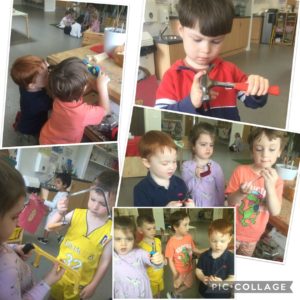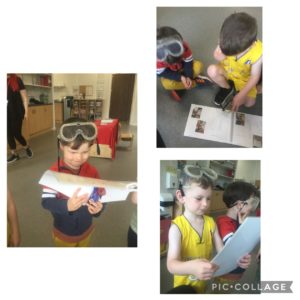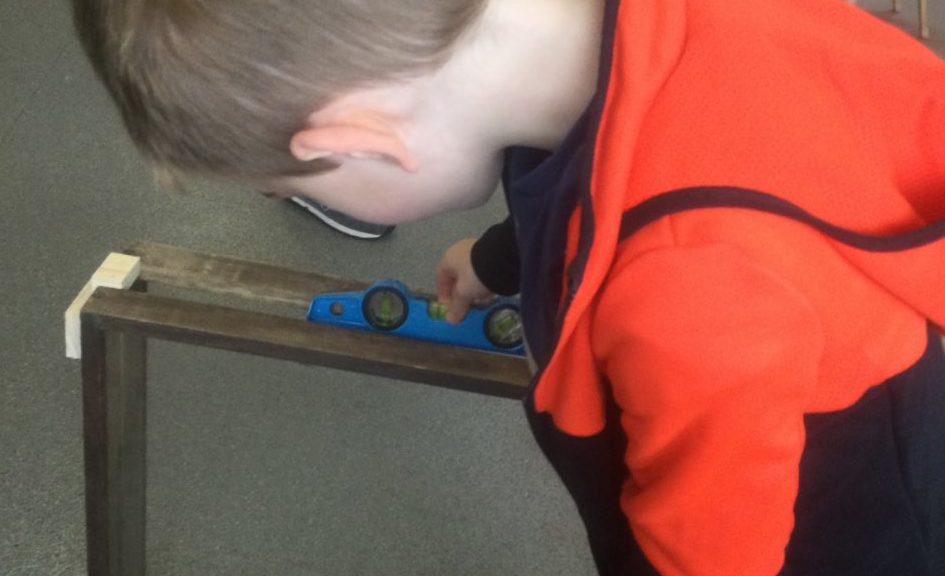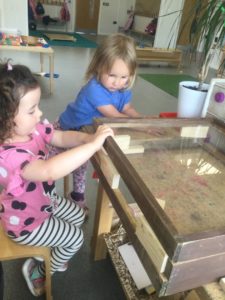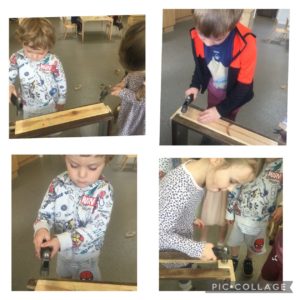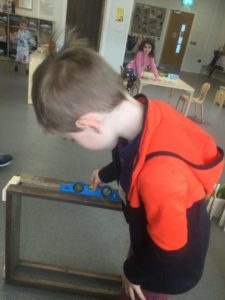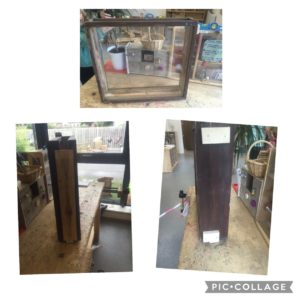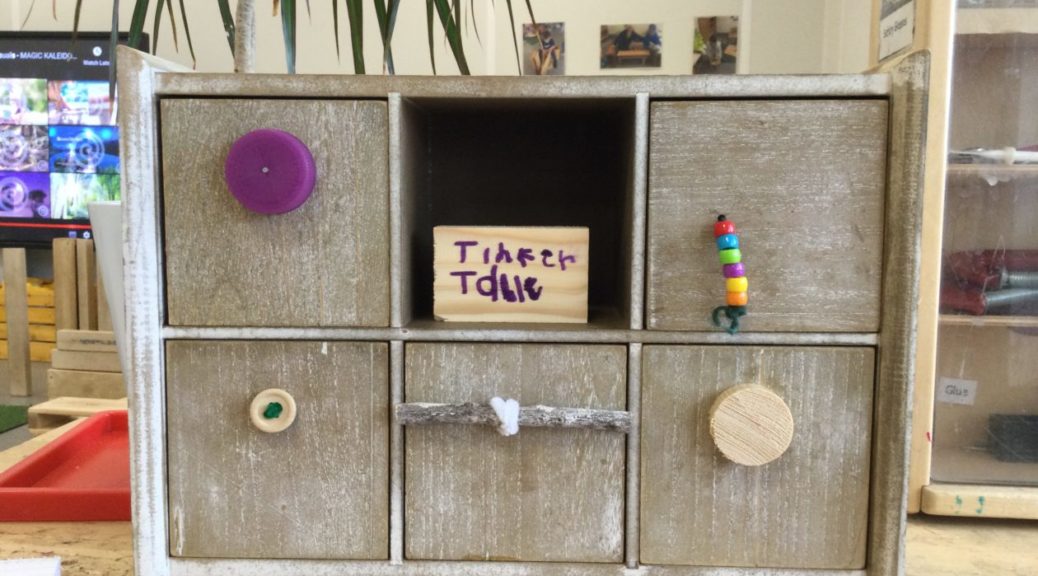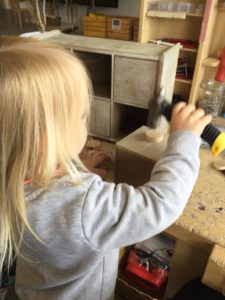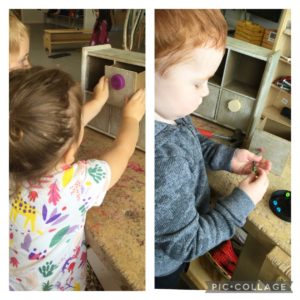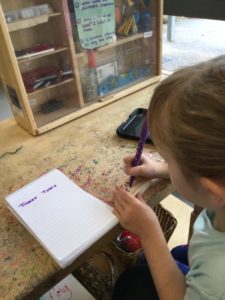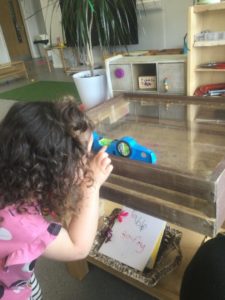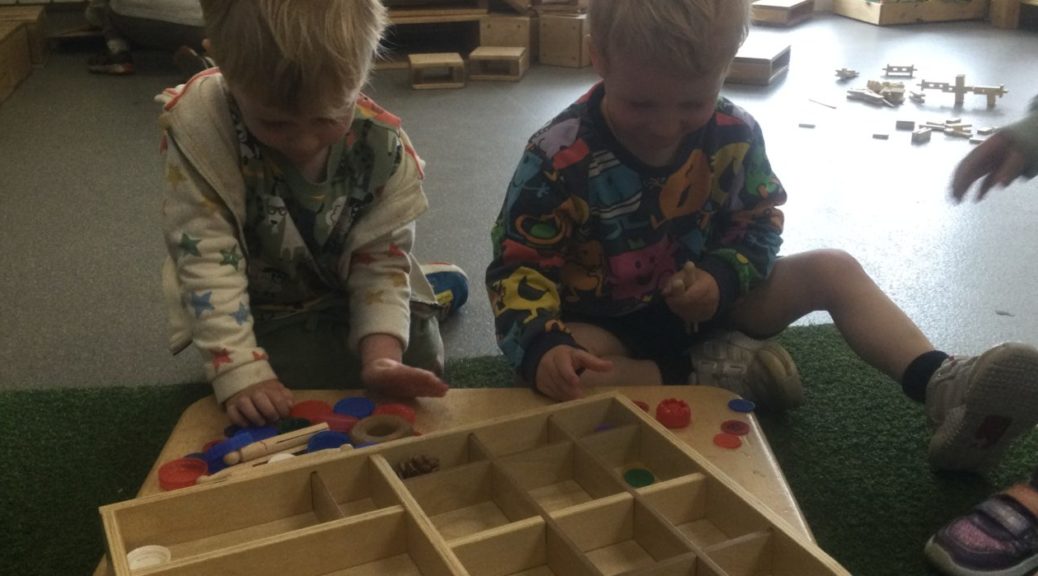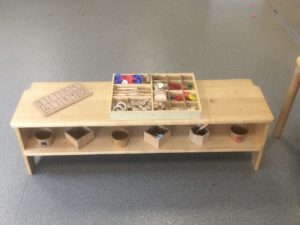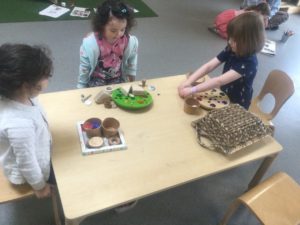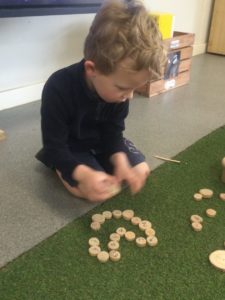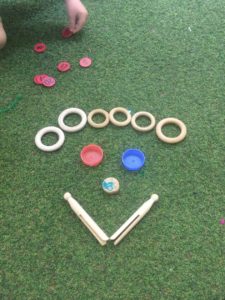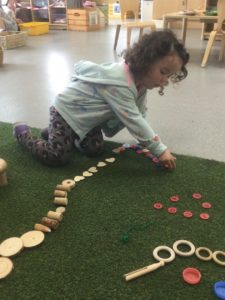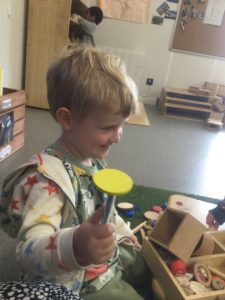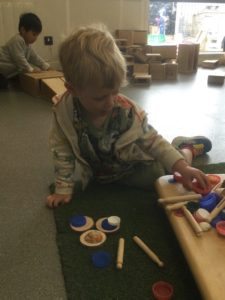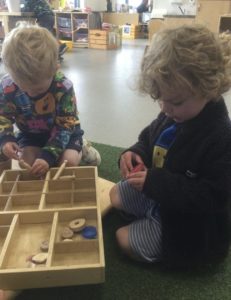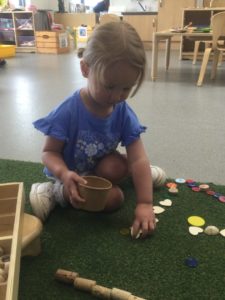At the start of the new term we revamped our STEM area and have since been learning about the different areas of STEM and how they can connect together. First we started by asking ‘What is STEM?’ and the children had some great ideas;
”It’s magnets.”
”It’s doing the shapes.”
”It’s floating and sinking.”
”It’s science.”
I explained that STEM stands for Science, Technology, Engineering and Maths so they were absolutely right, it is all of those things. We have been having great fun exploring all the different areas…
Science and the magic of magnets…

We have been learning about forces and how magnets can hold and move metal objects. We mixed science and maths by counting how many magnetic toys we could hang from the large magnet before they fell off. We even used science to paint by putting a paper clip in the paint and using the magnets to drag it around from under the paper plate!
Science and engineering in the water tray…

We have explored the different properties of water, finding out how it can change from a solid to a liquid through ice play and have learned why some objects float on water and some will sink. We then used this knowledge to create our own boats. We started by using the foil, but soon found the water came on top and sunk our boats. Using our problem solving skills, we became engineers and worked together to find a solution. One of us realised that boats have sides to stop the waves crashing inside the boat. This inspired us to wrap the foil round our hands and voila, our boats could not only float but also carry cargo!
Maths in action…
Numbers, numbers everywhere!

Some of us were able to order the number cards from 0-20 and had a great time hopping along it, shouting the numbers as they went. We have also been reading number stories and practising recognising numbers from 0-10.
Next week we will start exploring technology through coding. As it is Maths Week Scotland, we will learn about using positional language as well.



